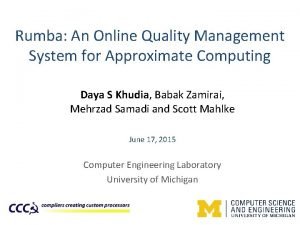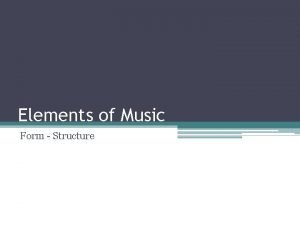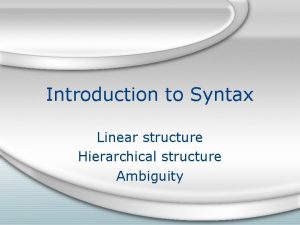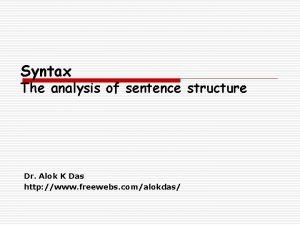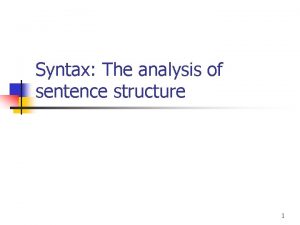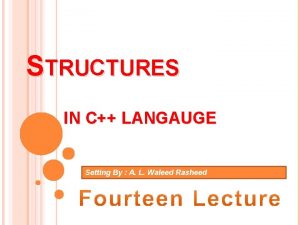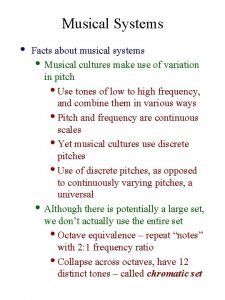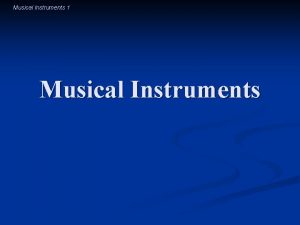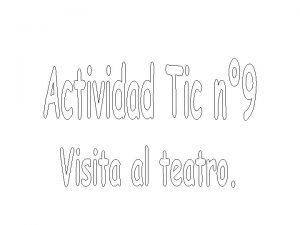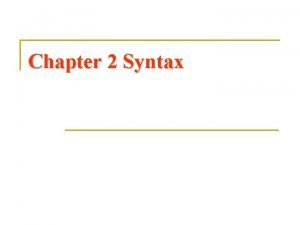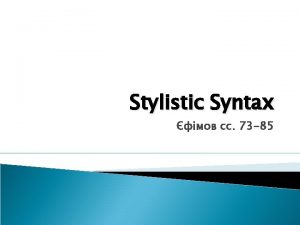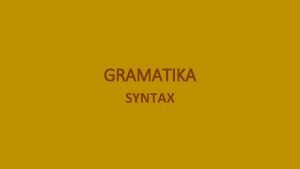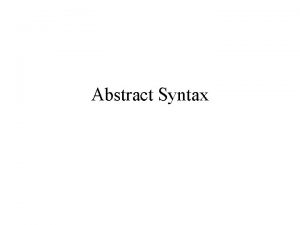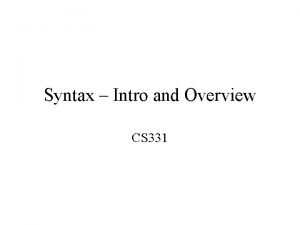Neural correlates of processing musical structure syntax Stefan











- Slides: 11

Neural correlates of processing musical structure („syntax“) Stefan Koelsch

What is musical syntax Koelsch & Sammler, PLo. S-ONE 2008

What is musical syntax Patel, Nat. Neurosci 2003

What is musical syntax Patel, Nat. Neurosci 2003

What is musical syntax Aspects in major-minor tonal music: • Extraction of tonal center • Subsequent chord functions are related to the tonal center • Establishment of a tonal hierarchy • Processing of musical events according to statistical regularities (e. g. , probabilities for the transitions of chord functions)

Neural correlates Figure 1. Neural correlates of music-syntactic processing. (a) In major-minor tonal music, chord functions are arranged within harmonic sequences according to certain regularities. Chord functions are the chords built on the tones of a scale. The chord on the first scale tone, e. g. , is denoted as the tonic, the chord on the fifth scale tone as the dominant. The major chord on the second tone of a major scale can be interpreted as the dominant to the dominant (square brackets). (b) One example for a regularity-based arrangement of chord functions is that the dominant-tonic progression is a prominent marker for the end of a harmonic sequence, whereas a tonic-dominant progression is unacceptable as a marker of the end of a harmonic sequence. The left sequence shown ends on a regular dominant-tonic progression, the final chord of the right sequence is a dominant to the dominant (arrow). This chord function is irregular, especially at the end of a harmonic progression (sound examples are available at www. stefankoelsch. de/TC_DD). (c) Electric brain potentials (in V) elicited by the final chords of the two sequence types presented in b (recorded from a right-frontal electrode site [F 4] from twelve subjects). Both sequence types were presented in pseudorandom order equiprobably in all twelve major keys. Brain responses to irregular chords clearly differ from those to regular chords. The first difference between the two black waveforms is maximal at about 0. 2 s after the onset of the chord (this is best seen in the red difference wave, which represents regular subtracted from irregular chords) and has a right-frontal preponderance. This early right anterior negativity (ERAN) is usually followed by a later negativity, the N 5 (short arrow). (d) With MEG, the magnetic equivalent of the ERAN was localized in the inferior frontolateral cortex (adapted from [8]) single-subject dipole solutions are indicated by blue disks, yellow dipoles indicate the grandaverage of these source reconstructions). (e) f. MRI data obtained from twenty subjects using a similar chord-sequence paradigm (the statistical parametric maps show areas that are more strongly activated during the processing of irregular than during the processing of regular chords). Corroborating the MEG data, the f. MRI data indicate activations of IFLC. Additionally, the f. MRI data indicate activations of ventrolateral premotor cortex, the anterior portion of the STG, and posterior temporal lobe structures. Koelsch, Curr Opinion Neurobiol 2005

Brain structures for music- and language-syntactic processing overlap L Broca‘s area

Interactions between music and language processing

Neural resources for music- and language-syntactic processing overlap Steinbeis & Koelsch, Cerebral Cortex, 2007

Music-syntactic processing is partly automatic The neural mechanisms underlying the processing of harmonic structure operate in the absence of attention, but that they can be modulated by different attentional demands Loui et al. , Cog Brain Res, 2005

Music-syntactic processing is influenced by musical training
 Correlates of effective schools
Correlates of effective schools Syntax directed translation
Syntax directed translation Efficient processing of deep neural networks
Efficient processing of deep neural networks Neural processing
Neural processing Structure-preserving neural style transfer
Structure-preserving neural style transfer Music reflect
Music reflect Linear order and hierarchical structure
Linear order and hierarchical structure Syntax the analysis of sentence structure
Syntax the analysis of sentence structure Syntax meaning
Syntax meaning Langauge
Langauge Bottom-up processing example
Bottom-up processing example Gloria suarez
Gloria suarez



